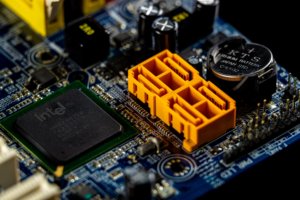
The company is focusing on offering a “dynamic, flexible and inclusive workplace that enables all our 110,600 employees to do their best work.” This will lead to a “results-driven organization and enable our teams to execute with speed.”
Instead of making knee-jerk decisions in the midst of uncertainty, Intel used data and analytics to shape decisions, including return-to-office plans. The leading chip maker also reached out to employees. In an international survey, 90% of respondents said that they preferred a hybrid workplace when their sites re-open.
Intel surveyed employees across the globe and used data to base decisions on working models and creating on-site collaboration spaces. Based on this, Pambianchi recently announced Intel’s overarching data-driven approach and its three working models.
In a conversation with Amber Wiseley, vice president of global benefits at Intel, Wiseley shared the following work plans for Intel employees.
- Hybrid – The majority of employees will split their time between working remotely and in the office. Intel is not mandating the number of days per week onsite or how people should collaborate, but empowering teams to find the balance that drives results.
- Onsite – As a manufacturing company, some roles will always be “onsite” full time. This includes employees who work in labs and factories that are critical to much of our world’s digital infrastructure.
- Fully remote – Intel will also continue supporting a small number of employees who have been designated as fully home-based, due to the nature of their work and generally attend Intel sites occasionally based on business need.
Additionally, Intel is continuing to prioritize and integrate diversity and inclusion into the company’s culture. It is also releasing a new external study focusing on inclusion in the future of work to understand how over 3,000 external business leaders from 17 countries are thinking about creating equitable workplaces.
Intel informed employees this month that it plans to increase employee compensation by over $2 billion. The impetus for the largesse, in part, is to help fight the war for talent that is going on in the tech space.
Businesses in all sectors— ranging from restaurants, warehouses and fulfillment centers to Wall Street—are finding it exceedingly difficult to attract, recruit and retain talent. For specialized professionals, such as software engineers and chip designers, it’s even tougher to hold onto all-star talent and entice “A” players to join their teams.
The new budget has added about $1 billion in pay and around $1.4 billion worth of stock compensation. A large portion will go toward retaining top talent, and other monies will be spent recruiting new people with hard-to-find requisite skills.
The enhanced payouts were “designed to enable Intel to win the fierce battle for talent in today’s competitive market,” according to the Oregonian, which saw the presentation.
The breakdown per employee will vary depending upon the job and person’s performance. It will be, however, directed disproportionately to employees with specialized knowledge and to high performers, due to fears of other companies poaching their staff.
This week, Intel told workers that unvaccinated people who don’t get an exemption for religious or medical reasons will be on unpaid leave beginning in April, according to the Associated Press. In a December 7 memo to employees, Pambianchi told employees the January 4 vaccine deadline remains in place and employees who aren’t vaccinated must seek a medical or religious accommodation and submit to weekly testing, regardless of whether they are still working remotely.
Source: Forbes


